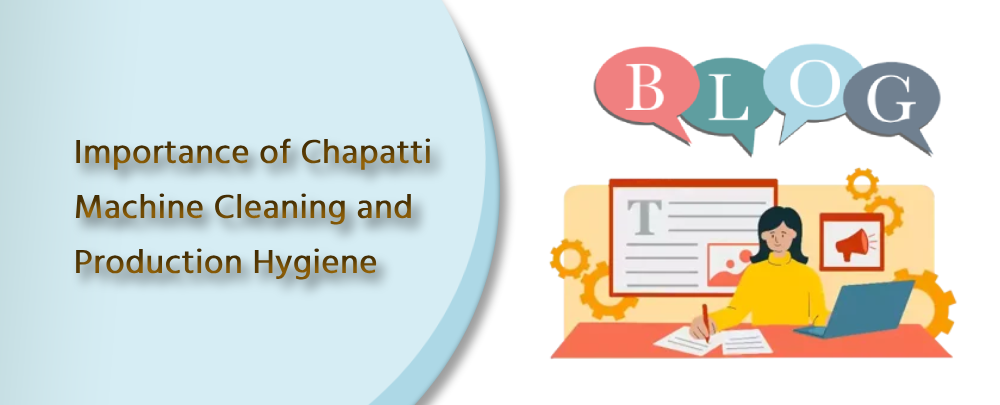
Ensuring Safe and Quality Roti: The Importance of Chapatti Machine Cleaning and Production Hygiene
Maintaining high hygiene standards in the production area and adhering to a rigorous chapati machine cleaning routine are essential to ensure the quality and safety of roti production. This approach prevents contamination, preserves the integrity of the product, and adheres to regulatory standards.
Importance of Hygiene in Roti Production
- Consumer Safety: Ensuring that every chapati is free from contaminants protects consumers from foodborne illnesses. Contaminants can come from various sources, including raw materials, machinery, and human handling. By maintaining high hygiene standards, producers minimize the risk of such hazards.
- Product Quality: Cleanliness directly impacts the quality of the final product. Any contamination can alter the taste, texture, or appearance of the chapatis, making them undesirable to consumers. A consistent hygiene routine ensures that the roti maintains its expected quality, contributing to customer satisfaction and brand reputation.
- Compliance with Regulations: Food production is subject to stringent regulatory standards. Meeting these standards requires a clean production environment. Regular inspections by health authorities can result in fines or shutdowns if hygiene standards are not met. A proactive approach to hygiene helps avoid such issues.
Chapati Machine Cleaning Routine
A comprehensive chapati machine cleaning routine is crucial in preventing contamination and ensuring continuous high performance of the machinery. Here are key steps involved:
- Daily Cleaning: At the end of each production cycle, machines should be thoroughly cleaned. This involves disassembling parts that come into contact with dough or finished chapatis, such as rollers, presses, and cutting tools. These parts should be washed with food-grade detergents and sanitized to eliminate any residues or microbial contamination.
- Deep Cleaning: Weekly or bi-weekly deep cleaning should be performed to address areas that are not accessible during daily cleaning. This includes the internal components and less obvious parts of the machinery. Deep cleaning prevents the buildup of grime and ensures that all potential contamination sources are eliminated.
- Regular Inspections and Maintenance: Routine inspections help identify wear and tear or areas where food particles might accumulate. Preventive maintenance, including lubricating moving parts and checking for any signs of corrosion or damage, ensures the machinery operates efficiently and hygienically.
Maintaining High Hygiene Standards
- Sanitization Protocols: Establish clear sanitization protocols for the production area, including regular cleaning schedules and the use of appropriate disinfectants. Floors, walls, and surfaces should be kept clean and free of food debris.
- Employee Training: Staff should be trained in hygiene practices, including proper hand washing, use of personal protective equipment (PPE), and protocols for handling food and cleaning machinery.
- Monitoring and Documentation: Implement a system to monitor hygiene practices and document cleaning routines. This helps maintain accountability and provides records for regulatory compliance.
By implementing these hygiene and cleaning practices, we can ensure our products are safe, high-quality, and compliant with industry standards, thus fostering trust with consumers and maintaining a strong market position.

